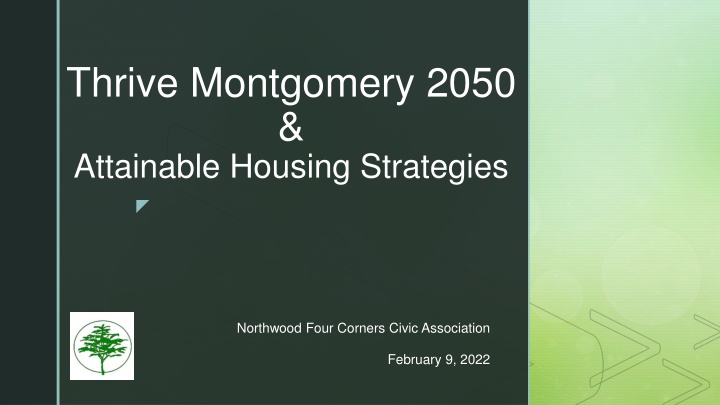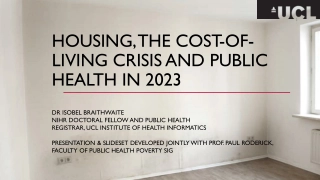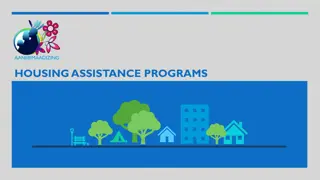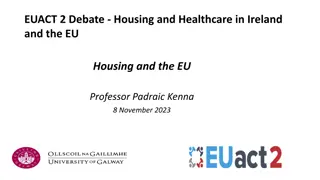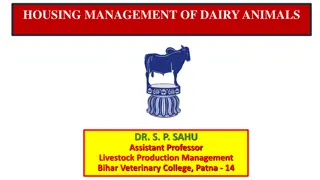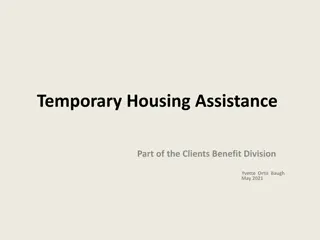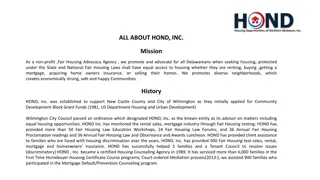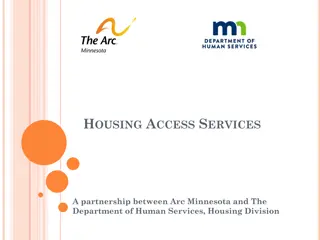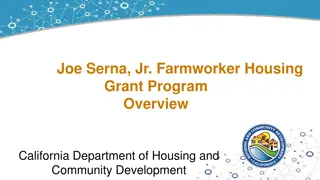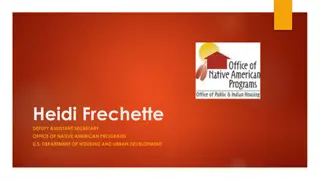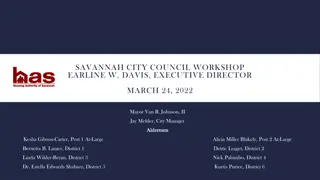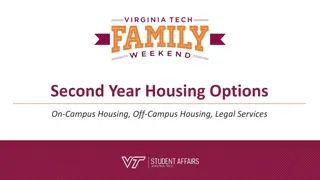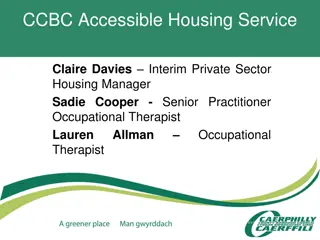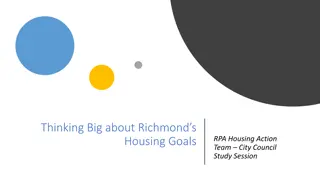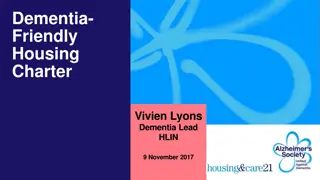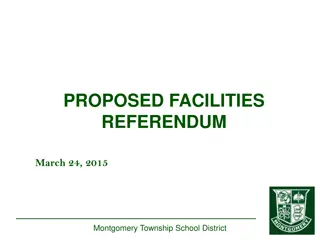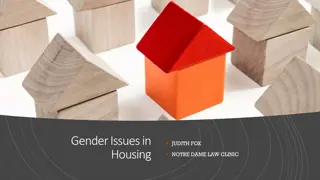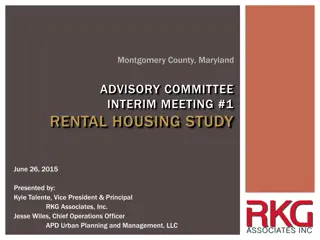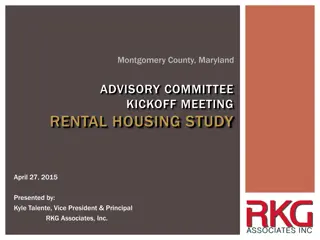Thrive Montgomery 2050 & Attainable Housing Strategies
Thrive Montgomery 2050 is a long-range general plan projecting County needs into the future, focusing on equitable distribution of services like transportation, economic development, and housing. Efforts are being made to increase housing supply and affordability for moderate- and middle-income households in Montgomery County.
Download Presentation

Please find below an Image/Link to download the presentation.
The content on the website is provided AS IS for your information and personal use only. It may not be sold, licensed, or shared on other websites without obtaining consent from the author.If you encounter any issues during the download, it is possible that the publisher has removed the file from their server.
You are allowed to download the files provided on this website for personal or commercial use, subject to the condition that they are used lawfully. All files are the property of their respective owners.
The content on the website is provided AS IS for your information and personal use only. It may not be sold, licensed, or shared on other websites without obtaining consent from the author.
E N D
Presentation Transcript
Thrive Montgomery 2050 & Attainable Housing Strategies Northwood Four Corners Civic Association February 9, 2022
2 What is Thrive Montgomery 2050? Long-range general plan document projecting County needs into the future Covers wide range of issues, including transportation, traffic safety, economic development, housing, environmental concerns, etc. Theme: Equitable distribution of services Could benefit down county areas by delivering more focus on providing social services, economic development, improved transportation solutions and safety improvements, etc.
3 Livability in Four Corners TM 2050 Areas of Concern Increase density by permitting small multifamily redevelopment in single family zoned areas Improve major transportation corridors o Dedicated FLASH lane on Route 29 which could impede access points to our neighborhood o Additional FLASH routes, on New Hampshire Ave and University Blvd
4 Missing Middle Housing The Montgomery County Planning Board sees need to increase county s housing supply to meet the demand of an estimated 200,000 additional residents by 2045. The Planning Board has been actively considering proposals to permit greater housing density near transportation corridors. Also, certain County Council members have begun to evaluate ways to increase housing affordability for moderate- and middle- income households the so-called Missing Middle.
5 Zoning Text Amendment ZTA 20-7 Increase market-rate, nonsubsidized Missing Middle housing. Permit development by right of small multi-unit in single family R-60 zones No need for approval from the Planning Board, but would still need to get a building permit Within 1 mile of metro. o Encourage denser development along existing transit corridors of duplexes, townhouses, and small apartments o Redeveloped housing must still meet lot coverage, height, setback, minimum lot size, and parking requirements Reduces parking requirements within 1/2 mile of Metro Current standard is two spaces per duplex or townhouse unit For duplex and townhouse reduces to one space For Multifamily Reduces to space for efficiency and 1 space for 1+ bedroom unit
6 Montgomery County Planning Board and Council Are Considering Missing Middle Housing Ideas The Montgomery County Council held a public hearing on ZTA 20- 07 on February 11, 2020. On March 4, 2021, Council President Tom Hucker and Hans Riemer, Chair of the Committee on Planning, Housing and Economic Development (PHED) sent a letter asking the Planning Board to evaluate zoning reforms to increase Missing Middle housing and make recommendations on zoning text amendments. Noted that these proposals are complex and very significant Riemer asked the Planning Board to specifically review Missing Middle, provide more opportunity for public input, and develop recommendations for the Council.
7 Attainable Housing Strategies (AHS) Planning staff presented AHS strategies to County Council on June 24, 2021 Allow development by-right of Duplexes and triplexes and in the R-40, R-60, R-90, & R-200 zones o Quadplexes in buffer areas along transit corridors. o What will these multi-unit dwellings look like? New building must remain within allowable footprint, ie footprint permitted for single family unit Conform redeveloped units to a Planning Board-approved Design Pattern Book that gives guidance on massing, scale, and design to blend in among single-family homes Ease process Create a new optional method of development to encourage consolidation and development of duplexes, cottage courts, townhouses, and small multiplexes and apartments near transit, along Thrive Growth Corridors and near the county s centers of activity. Permit up to 20-unit multifamily on property fronting transportation corridors
8 Corridor-focused Master Plans to Identify Locations for Larger Scale Attainable Housing Defines a Priority Housing District as an area within: o 1 mile of Metro or a light rail station o mile of MARC station o 500 feet of a Growth Corridor identified in TM 2050 Four Corners almost certainly a Priority Housing District Bounded by major transportation corridors. BRT Flash busses are already operating on Route 29 University Boulevard from Wheaton to Langley Park is a recommended BRT route in the Countywide Transit Corridor Functional Master Plan.
9 NFCCA Concerns Added density in our close-in community Increase problems such as traffic, school crowding, parking issues, and delivery of municipal services. No review of impact on delivery of municipal services, e.g. trash, snowplow, firetruck on narrow streets with cars parked on both sides Nearby schools are already overcrowded and no additional building sites nearby Reduced parking requirements Unproven concept that residents will increase use of alternative transportation Planning staff have stated that they may need to consider impact of less parking on narrow streets
10 Process Steps for Thrive 2050 and AHS NFCCA submitted comments throughout lengthy Thrive 2050 planning process Most recently raised concerns about increasing housing density in single family zoned areas. Councilmember Hans Riemer Presently drafting additional changes to ZTA 20-7 that if introduced would apply to transportation corridors, such as Colesville Road and University Boulevard The Planning Board is continuing its work reviewing staff recommendations on AHS and developing proposed ZTA drafts.
11 Process Steps for Thrive 2050 and AHS Thrive 2050 has yet to be adopted by the County Council. TM 2050 is a planning blueprint and further legislation or zoning amendments must be adopted to put in place the concepts laid out in TM 2050. Council is holding work sessions on Thrive 2050 this month and likely into next month Council intends to adopt Thrive before considering any of the recommendations contained in the AHS report.
12 Process Steps for Thrive 2050 and AHS The AHS report went to Planning board for its review in December. The AHS report must still receive final approval from the Planning Board. After the Planning Board releases draft AHS recommendations, public meetings and work sessions will be held before adopting the final recommendations and transmitting the report to the County Council. The County Council has final say on which AHS recommendations to pursue. The Council will hold work sessions and public hearings. Councilmember Riemer not expected to take up zoning text changes in the PHED Committee until the Thrive 2050 general plan is finalized.
13 Transportation Issues on Route 29/Colesville Road Draft US 29 Mobility and Reliability Study issued in July 2020 Evaluated improvement(s) to decrease corridor travel time and reliability. Recommended the FLASH bus operate in a Managed Lane , essentially a HOV lane on the existing route Rather than building a dedicated lane in the median where only FLASH busses could travel. Finding pleased NFCCA, because the Managed Lane approach has least impact on the streets where cars can turn into and out of our neighborhood. This Draft Study was presented to the Montgomery County Council Transportation and Environment (T&E) Committee on January 27,2021
14 Transportation Issues on Route 29/Colesville Road The T&E Committee requested additional study of the alternatives. Preference voiced for dedicated median lane approach and further study The Montgomery County Planning Department staff Council members on the T&E Committee Also considering nearby changes to FLASH stop locations Move northbound FLASH stop to median between church and 7 Eleven Add crosswalks to stop at Trader Joes Move Lockwood stop
15 Transportation Issues on Route 29/Colesville Road Steps for Study and Public Input Alternatives Development and Analysis Winter 2022 CAC Meetings November 16, 2021 Public Meeting #1 December 16, 2021 Public Meeting # 2 Spring 2022 Report and Recommendation Summer 2022
16 Questions?
